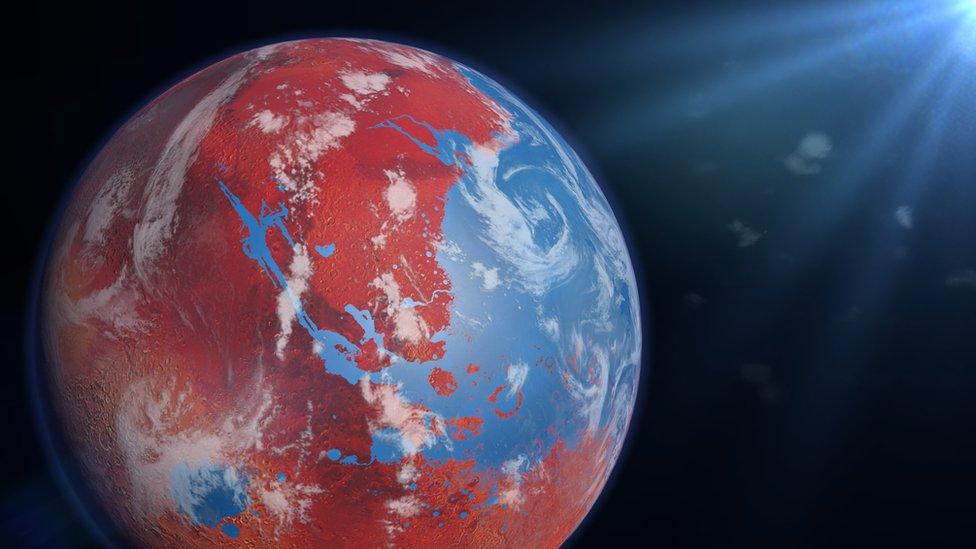Mars: Huge asteroid compared to one that wiped out dinosaurs
- Published
- comments

Between 4.1 and 3.8 billion years ago, Mars had a massive ocean on its surface called Oceanus Borealis.
A mega-tsunami on Mars could have been caused by an asteroid strike similar to the one that wiped out the dinosaurs 66 million years ago.
That what scientists think might have happened before it became the dusty red planet we know today.
A tsunami is a series of very high waves usually in an ocean or a large lake, but in this case they think the asteroid strike created a massive 250 metre wave of water that swept across the planet's surface.
Today Mars still has evidence of valleys where water once flowed on its surface
In 1976 Nasa successfully landed a craft called Viking 1 on Mars for the first time.
Analysis of the Martian surface from that mission suggested that boulders and rocks on the planet had been moved by water.
A theory was that the likely cause was a catastrophic event such as large flood or massive wave known as a tsunami.
On Earth earthquakes, caused by the movement of tectonic plates, can cause tsunamis.
But Mars doesn't have any tectonic plates, so experts believe that the evidence of a large wave - which was about one-and-a-half times as tall as Blackpool Tower - was the result of an asteroid or comet strike.
Mars is the fourth planet from the sun
It is a dusty, cold, desert world with a very thin atmosphere
After looking at maps of Mars, scientists at the Planetary Science Institute in Tucson, Arizona have identified an impact crater that could've been the cause of a massive tsunami on the Martian surface.
Named Pohl, the crater measures 110 kilometers (km) (68 miles) wide and is located in an area of what would have had shallow ocean waters on the red planet's surface.
Nasa: US space agency crashes spacecraft into asteroid (Oct 2022)
For comparison, Earth's Chicxulub crater, in the Gulf of Mexico, which is believed to be from the asteroid that wiped out the dinosaurs, measures 180km (110 miles) wide.
Scientists believe the impact happened 3.4 billion years ago based on the craters position above and below rocks previously dated around this time period.
- Published30 June 2020
- Published12 October 2022
- Published21 August 2021
